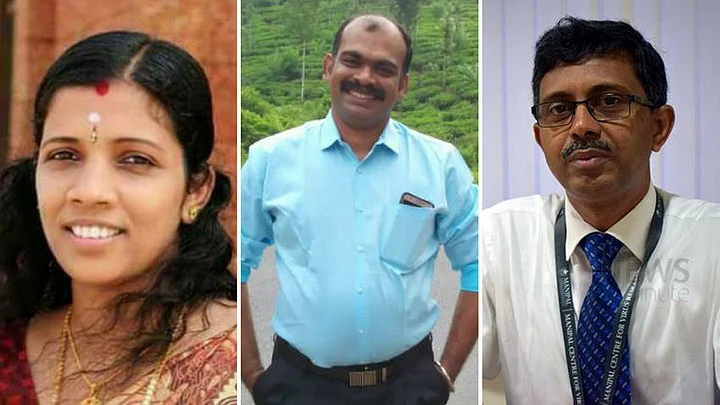At least 17 people died from Nipah virus in Kerala in May 2017. The swift action of people within the Kerala health department, and the state’s hospitals and medical colleges, contained the spread of the deadly virus. These are the real heroes who fought the Nipah Virus.
Dr Arun Kumar – The Man Who Spotted the Virus
When the Moosa family in Kozhikode’s Changaroth fell sick with an unknown ailment, it was doctor Arun Kumar who identified it as the little known Nipah virus. The head of the Manipal Centre for Virus Research (MCVR), Dr Kumar conducted a series of tests that aren’t often used.
Dr Kumar, in an interview with The News Minute, revealed that at the time the Moosa family fell ill, he was working on a project testing samples for Nipah from Tripura and Assam, because of these states’ proximity to Bangladesh.
“Because of these, the tests were ready, our laboratory was trained well and we were prepared. That’s how we could use it in Kerala,” he said to The News Minute
Doctor Arun Kumar’s work with the virus led him to conclude that that they needed to be prepared to tackle viruses not indigenous to Kerala, which led to the timely response by the state health department.
Dr Gopakumar – The One Who Stood by Patients Till the End
Dr Gopakumar is a member of the task force constituted by Kozhikode District Collector UV Jose and the Directorate of Health Services to fight the Nipah Virus.
He supervised the cremations of at least 12 people who lost their lives to the Nipah virus.
In the days after the virus first struck, many workers in local crematoriums refused to perform the funeral rites and cremate the bodies of patients who had succumbed to the virus. The workers feared being infected with the Nipah Virus.
Despite Dr Gopakumar’s attempts to explain that the virus doesn’t spread this way, the workers refused to cremate Nipah virus victims.
Dr Gopakumar then handled the last rites of 12 victims. In the case of 9 victims, he supervised the funeral rites, but for three more, he performed the funeral rites himself, The News Minute reported.
Nurse Lini Puthussery, Who Gave Her Life to Save Others
Lini Puthussery was a nurse in Kozhikode who was taking care of Mohammad Sadik, one of the first victims of the Nipah virus. Since the virus was still relatively unknown, Sadik’s blood samples were never tested for Nipah.
A few days after Sadik died, Lini developed a fever, which gradually got worse. She was quarantined and kept in isolation soon after.
On her last day, Lini wrote in a letter to her husband Sajeesh, “I think I’m almost on my way. I don’t think I’ll be able to meet you. Take care of our children.”
After her death, she was commemorated by Jim Campbell, Director of the Health Workforce, World Health Organisation, in a tweet.
The Others Who Worked From Within
Rajeev Sadanandan, Additional Chief Secretary, Health and Family Welfare department in the Kerala government.
His swift decision-making enabled state and national bodies to tackle the disease and minimize the damage from the virus, The News Minute reported.
He enabled the speedy procurement the Human Monoclonal Antibodies from Australia, the only known effective antibody against the Nipah Virus.
He coordinated with the University of Queensland Australia where the antibody was developed, as well as with the WHO and the Australian government.
Dr V Jayasree, District Medical Officer, Kozhikode district. She was one of the several administrative personnel who coordinated the district-level response to the Nipah virus.
Dr Jayasree said, in an interview with The News Minute, that despite the health department having no prior experience with the Nipah virus, the state department and local medical colleges came together to make a massive difference in the response to the virus.
Dr KG Sajith Kumar, Superintendent of Kozhikode Medical College Hospital, led the hospital’s swift response which minimized of the virus’ spread.
Dr Sajith Kumar told The News Minute that the main obstacle before them was a lack of proper wards for isolation.
He added, “Our priority was to treat patients while keeping the hospital staff protected.”
(With inputs from The News Minute)
(At The Quint, we question everything. Play an active role in shaping our journalism by becoming a member today.)
